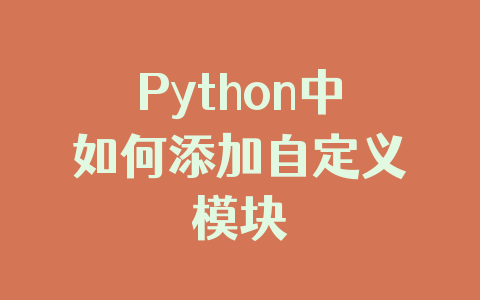Beautiful Soup就是Python的一个HTML或XML的解析库,可以用它来方便地从网页中提取数据。它有如下三个特点:
- Beautiful Soup提供一些简单的、Python式的函数来处理导航、搜索、修改分析树等功能。它是一个工具箱,通过解析文档为用户提供需要抓取的数据,因为简单,所以不需要多少代码就可以写出一个完整的应用程序。
- Beautiful Soup自动将输入文档转换为Unicode编码,输出文档转换为UTF-8编码。你不需要考虑编码方式,除非文档没有指定一个编码方式,这时你仅仅需要说明一下原始编码方式就可以了。
- Beautiful Soup已成为和lxml、html6lib一样出色的Python解释器,为用户灵活地提供不同的解析策略或强劲的速度。
首先,我们要安装它:pip install bs4,然后安装 pip install beautifulsoup4.
Beautiful Soup支持的解析器

下面我们以lxml解析器为例:
from bs4 import BeautifulSoup
soup = BeautifulSoup(\'<p>Hello</p>\’, \’lxml\’)
print(soup.p.string)
结果:
Hello
beautiful soup美化的效果实例:
html = \"\"\" <html><head><title>The Dormouse\'s story</title></head> <body> <p class=\"title\" name=\"dromouse\"><b>The Dormouse\'s story</b></p> <p class=\"story\">Once upon a time there were three little sisters; and their names were <a href=\"http://example.com/elsie\" rel=\"external nofollow\" rel=\"external nofollow\" rel=\"external nofollow\" class=\"sister\" id=\"link1\"><!-- Elsie --></a>, <a href=\"http://example.com/lacie\" rel=\"external nofollow\" rel=\"external nofollow\" rel=\"external nofollow\" class=\"sister\" id=\"link2\">Lacie</a> and <a href=\"http://example.com/tillie\" rel=\"external nofollow\" rel=\"external nofollow\" rel=\"external nofollow\" class=\"sister\" id=\"link3\">Tillie</a>; and they lived at the bottom of a well.</p> <p class=\"story\">...</p> \"\"\" from bs4 import BeautifulSoup soup = BeautifulSoup(html, \'lxml\')#调用prettify()方法。这个方法可以把要解析的字符串以标准的缩进格式输出 print(soup.prettify()) print(soup.title.string)
结果:
<html> <head> <title> The Dormouse\'s story </title> </head> <body> <p class=\"title\" name=\"dromouse\"> <b> The Dormouse\'s story </b> </p> <p class=\"story\"> Once upon a time there were three little sisters; and their names were <a class=\"sister\" href=\"http://example.com/elsie\" rel=\"external nofollow\" rel=\"external nofollow\" rel=\"external nofollow\" id=\"link1\"> <!-- Elsie --> </a> , <a class=\"sister\" href=\"http://example.com/lacie\" rel=\"external nofollow\" rel=\"external nofollow\" rel=\"external nofollow\" id=\"link2\"> Lacie </a> and <a class=\"sister\" href=\"http://example.com/tillie\" rel=\"external nofollow\" rel=\"external nofollow\" rel=\"external nofollow\" id=\"link3\"> Tillie </a> ; and they lived at the bottom of a well. </p> <p class=\"story\"> ... </p> </body> </html> The Dormouse\'s story
下面举例说明选择元素、属性、名称的方法
html = \"\"\" <html><head><title>The Dormouse\'s story</title></head> <body> <p class=\"title\" name=\"dromouse\"><b>The Dormouse\'s story</b></p> <p class=\"story\">Once upon a time there were three little sisters; and their names were <a href=\"http://example.com/elsie\" rel=\"external nofollow\" rel=\"external nofollow\" rel=\"external nofollow\" class=\"sister\" id=\"link1\"><!-- Elsie --></a>, <a href=\"http://example.com/lacie\" rel=\"external nofollow\" rel=\"external nofollow\" rel=\"external nofollow\" class=\"sister\" id=\"link2\">Lacie</a> and <a href=\"http://example.com/tillie\" rel=\"external nofollow\" rel=\"external nofollow\" rel=\"external nofollow\" class=\"sister\" id=\"link3\">Tillie</a>; and they lived at the bottom of a well.</p> <p class=\"story\">...</p> \"\"\" from bs4 import BeautifulSoup soup = BeautifulSoup(html, \'lxml\') print(\'输出结果为title节点加里面的文字内容:\\n\',soup.title) print(\'输出它的类型:\\n\',type(soup.title)) print(\'输出节点的文本内容:\\n\',soup.title.string) print(\'结果是节点加其内部的所有内容:\\n\',soup.head) print(\'结果是第一个p节点的内容:\\n\',soup.p) print(\'利用name属性获取节点的名称:\\n\',soup.title.name) #这里需要注意的是,有的返回结果是字符串,有的返回结果是字符串组成的列表。 # 比如,name属性的值是唯一的,返回的结果就是单个字符串。 # 而对于class,一个节点元素可能有多个class,所以返回的是列表。 print(\'每个节点可能有多个属性,比如id和class等:\\n\',soup.p.attrs) print(\'选择这个节点元素后,可以调用attrs获取所有属性:\\n\',soup.p.attrs[\'name\']) print(\'获取p标签的name属性值:\\n\',soup.p[\'name\']) print(\'获取p标签的class属性值:\\n\',soup.p[\'class\']) print(\'获取第一个p节点的文本:\\n\',soup.p.string)
结果:
输出结果为title节点加里面的文字内容:
<title>The Dormouse\'s story</title>
输出它的类型:
<class \'bs4.element.Tag\'>
输出节点的文本内容:
The Dormouse\'s story
结果是节点加其内部的所有内容:
<head><title>The Dormouse\'s story</title></head>
结果是第一个p节点的内容:
<p class=\"title\" name=\"dromouse\"><b>The Dormouse\'s story</b></p>
利用name属性获取节点的名称:
title
每个节点可能有多个属性,比如id和class等:
{\'class\': [\'title\'], \'name\': \'dromouse\'}
选择这个节点元素后,可以调用attrs获取所有属性:
dromouse
获取p标签的name属性值:
dromouse
获取p标签的class属性值:
[\'title\']
获取第一个p节点的文本:
The Dormouse\'s story
在上面的例子中,我们知道每一个返回结果都是bs4.element.Tag类型,它同样可以继续调用节点进行下一步的选择。
html = \"\"\" <html><head><title>The Dormouse\'s story</title></head> <body> \"\"\" from bs4 import BeautifulSoup soup = BeautifulSoup(html, \'lxml\') print(\'获取了head节点元素,继续调用head来选取其内部的head节点元素:\\n\',soup.head.title) print(\'继续调用输出类型:\\n\',type(soup.head.title)) print(\'继续调用输出内容:\\n\',soup.head.title.string)
结果:
获取了head节点元素,继续调用head来选取其内部的head节点元素: <title>The Dormouse\'s story</title> 继续调用输出类型: <class \'bs4.element.Tag\'> 继续调用输出内容: The Dormouse\'s story
(1)find_all()
find_all,顾名思义,就是查询所有符合条件的元素。给它传入一些属性或文本,就可以得到符合条件的元素,它的功能十分强大。
find_all(name , attrs , recursive , text , **kwargs)
他的用法:
html=\'\'\'
<div class=\"panel\">
<div class=\"panel-heading\">
<h4>Hello</h4>
</div>
<div class=\"panel-body\">
<ul class=\"list\" id=\"list-1\">
<li class=\"element\">Foo</li>
<li class=\"element\">Bar</li>
<li class=\"element\">Jay</li>
</ul>
<ul class=\"list list-small\" id=\"list-2\">
<li class=\"element\">Foo</li>
<li class=\"element\">Bar</li>
</ul>
</div>
</div>
\'\'\'
from bs4 import BeautifulSoup
soup = BeautifulSoup(html, \'lxml\')
print(\'查询所有ul节点,返回结果是列表类型,长度为2:\\n\',soup.find_all(name=\'ul\'))
print(\'每个元素依然都是bs4.element.Tag类型:\\n\',type(soup.find_all(name=\'ul\')[0]))
#将以上步骤换一种方式,遍历出来
for ul in soup.find_all(name=\'ul\'):
print(\'输出每个u1:\',ul.find_all(name=\'li\'))
#遍历两层
for ul in soup.find_all(name=\'ul\'):
print(\'输出每个u1:\',ul.find_all(name=\'li\'))
for li in ul.find_all(name=\'li\'):
print(\'输出每个元素:\',li.string)
结果:
查询所有ul节点,返回结果是列表类型,长度为2: [<ul class=\"list\" id=\"list-1\"> <li class=\"element\">Foo</li> <li class=\"element\">Bar</li> <li class=\"element\">Jay</li> </ul>, <ul class=\"list list-small\" id=\"list-2\"> <li class=\"element\">Foo</li> <li class=\"element\">Bar</li> </ul>] 每个元素依然都是bs4.element.Tag类型: <class \'bs4.element.Tag\'> 输出每个u1: [<li class=\"element\">Foo</li>, <li class=\"element\">Bar</li>, <li class=\"element\">Jay</li>] 输出每个u1: [<li class=\"element\">Foo</li>, <li class=\"element\">Bar</li>] 输出每个u1: [<li class=\"element\">Foo</li>, <li class=\"element\">Bar</li>, <li class=\"element\">Jay</li>] 输出每个元素: Foo 输出每个元素: Bar 输出每个元素: Jay 输出每个u1: [<li class=\"element\">Foo</li>, <li class=\"element\">Bar</li>] 输出每个元素: Foo 输出每个元素: Bar
以上就是本文的全部内容,希望对大家的学习有所帮助,也希望大家多多支持自学编程网。













